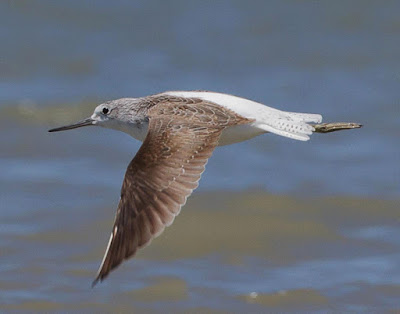Birding situations often arise where we need greater magnification than binoculars can provide. I'm not one for humping a telescope and tripod around. I like to travel light, and very often my camera on a shoulder is second only to a pair of bins around my neck. But I always make sure there’s a telescope in the car for those occasions when birds are a long way off and maybe one or two require special attention and a more detailed appraisal.
A telescope can be an expensive piece of kit but is probably essential for someone looking to expand their birding into new territory.
Here’s a round-up of some of the best scopes on offer at the moment, so if you’re in the market for greater magnification, check them out.
I have not included prices as these vary to some extent. I believe that the ones featured below are available on both sides of the Atlantic, Europe and other continents. Yes, birding is a global phenomenon as shown by the “hits” on Another Bird Blog from the World over.
Here are those telescopes.
Vortex Razor HD 27-60×85
Vortex Razor HD 27-60x85
I use inexpensive Vortex bins. I rather like the brand because their robust build with sharp optics take a hammering from almost daily use in all sorts of weather.
The Razor HD 27-60×85 scope is engineered with an oversized objective, superior glass, and specialized coatings. It gives clear and bright images at all magnifications and lighting conditions. It also minimizes light loss and maximizes image brightness with Vortex’s XRPlus anti-reflective coatings. The Porro prisms have highly dielectric coatings designed to improve brightness, clarity, and colour accuracy.
Kowa TSN-553 15-45×55
Kowa TSN 553 14-45 x 55
The Kowa TSN-553 15-45×55 uses low-dispersion PROMINAR fluoride glass that reduces chromatic aberrations that when paired with the multi-coated optics and two-speed focusing mechanism produce bright and clear images. The impressive zoom range allows the user to take in a wide field of view for general viewing purposes and the ability to draw subjects in close for more detailed observations.
Swarovski ATS-65 HD 20-60×65
Swarovski ATS-65 HD 20-60 x 65
The ATS-65 HD Spotting Scope with eyepiece is a rugged yet refined scope from Swarovski. It is compact, relatively lightweight, and particularly well-suited for birders who like to carry a scope at all times. Swarovski’s ATS series combines the high image quality and world-class workmanship consumers can expect from this renowned company.
ZEISS Victory Harpia 85
Zeiss Victory Harpia 85 or 95
This is the rather expensive flagship of the Zeiss range. The extra-low dispersion fluoride glass of the ZEISS Victory Harpia 85 or 95 Spotting Scope ensures crisp and sharp views.
The Harpia is somewhat unique. The wide-angle zoom mechanism has been placed in the objective end of the scope near the focusing wheel, not in the eyepiece, which allows greater flexibility in the way the image is presented. The makers say that it is easy to clean off oils, spots, dust, and dirt without residue due to the LotuTec coating on the exterior lens. Sounds like the one for me, but I need to save up for one or raid the grandkids' piggy banks.
Leica APO-Televid 82 25-50 x 82
Leica APO Televid 82 25-50 x 82
Lightweight, easy-to-manage, and offering top optical performance, the APO-Televid 82 delivers brilliant views of nature that are rich in detail and contrast. In addition to conventional viewing, there is a special camera adapter that allows it to convert into a high-powered telephoto lens.
The above is just a selection of the telescopes you can find on the Internet. Very often there is a You Tube video with a spoken review and detailed analysis of the product.
Try a DuckDuckGo search for “birding telescope”. You will get something like 240,00 results! Good Luck.
Try a DuckDuckGo search for “birding telescope”. You will get something like 240,00 results! Good Luck.
Linking today to Stewart's World Bird Wednesday.














































.JPG)







.jpg)












